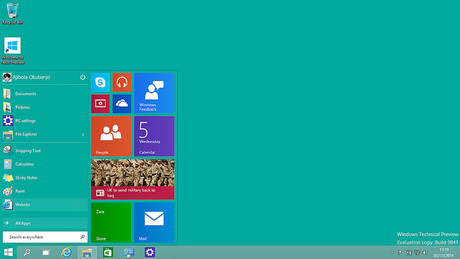91% of IT orgs have installed Windows 10

More than nine in 10 (91%) IT organisations have adopted Windows 10 to some extent, but only 10% have fully adopted the OS, according to research commissioned by Ivanti.
A survey conducted for the company by Dimensional Research found that of the IT organisations that have installed Windows 10, the majority (56%) are in the early stages, using the OS in only trial or other limited environments.
A further 34% are in production — defined as using the OS for business benefit — to only a limited extent, with the remaining 10% in full production.
Nearly nine in 10 respondents (87%) have concerns inhibiting further adoption, including application compatibility (65%), the need for user training (43%), the manual effort required to complete a migration (31%), the performance of applications (24%) and the increased complexity of image management (23%).
But the actual impact of these concerns appears to be lower than popularly anticipated, with 50% of adopters reporting application compatibility issues, 34% facing issues with support from application vendors and 19% reporting a lack of hardware support.
Despite these concerns, adoption of the OS is expected to accelerate, with Dimensional Research predicting that 77% of organisations will be fully migrated even outside of IT within the next two years — up from 51% this year.
The report also shows that no single approach to migrating to the new OS has become a standard, with reimaging, hardware migration and centrally-managed in-place migration having a nearly equal level of prevalence.
Another factor that may be inhibiting adoption is the requirement to select a preferred branch of the operating system. Just over half (51%) of IT organisations haven’t yet decided whether to use the Current Branch for Business (CBB) or Long-Term Service Branch (LTSB), and 26% reported that this indecision has led to a delay in adoption.
“Windows 10 adoption is unavoidable, so every organisation needs to brace themselves with the tools and strategies that will make their migration a success,” said Ivanti’s VP of product management, Jon Rolls.
“By implementing a unified approach to endpoint management and adopting user workspace management solutions to ensure a great user experience, enhanced productivity and minimised retraining, companies can realise Windows 10 migration success and smooth the constant updates and upgrades that come with Windows as a Service.”
OpenAI opens Australian office
OpenAI's first Australian office in Sydney will initially support local customers and...
Symbos acquires CPM Australia
CX and digital service provider Symbos has acquired CPM Australia as part of its efforts to...
Kyndryl launches agentic AI services for IBM z/OS
Technology services provider Kyndryl is collaborating with IBM to help enterprises introduce AI...







